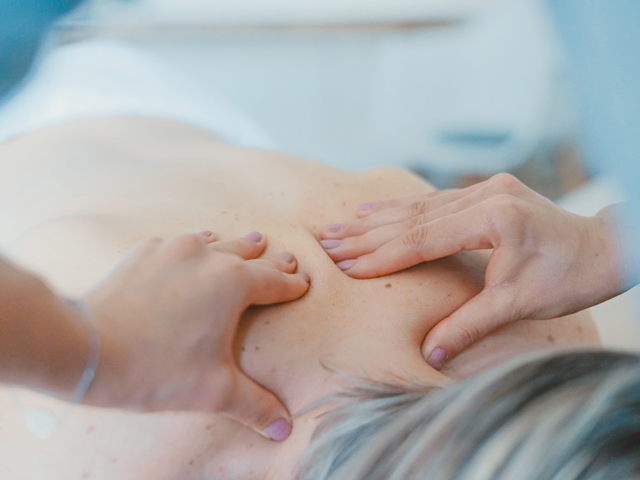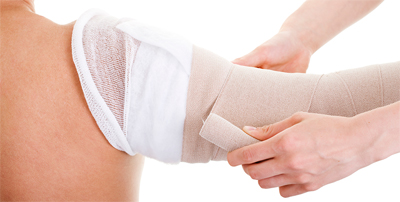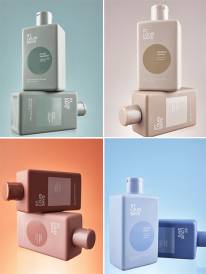Elise Gane Lymphoedema Interview

Physiotherapy Treatment Integral for Australians Living with Lymphoedema
The Australian Physiotherapy Association (APA) has joined the Australasian Lymphology Association (ALA) in calling for federal government funding for the estimated one in 6,000 Australians living with lymphoedema from birth. Additionally, 20 per cent of cancer patients will develop the condition as a result of treatment side effects.
Lymphoedema is the accumulation of fluid in the body which causes uncomfortable swelling, impaired mobility and recurrent infections. It most frequently affects the arms and legs, but can also be present in the groin, head and neck regions.
Primary lymphoedema is a congenital condition in which the lymphatic vessels and nodes are not fully formed, while secondary lymphoedema occurs after damage to the lymphatic system, such as trauma, surgery or radiation therapy (often associated with cancer treatment). The condition is chronic and requires ongoing monitoring and self-management supported by qualified health professionals.
National Chair of the APA Cancer, Lymphoedema and Palliative Care group, Elise Gane, says that providing federal funding and early access to specialist lymphoedema physiotherapy treatment is essential to reduce the significant personal impact and wider socio-economic burden of this condition.
"Physios who treat patients with lymphoedema have good success in helping them relieve discomfort, get better joint movement in the affected area, and become more physically active. In particular, lymphoedema-trained physios are expert at managing patients' lymphatic drainage with compression or massage, and prescribing exercises to help them get back to their normal work, study and physical activity routines which are so important to overall quality of life."
"Currently there isn't a stand-alone Medicare item number for physios to help their patients manage lymphoedema. While public hospital services are good, the majority of people living with lymphoedema cannot access public services easily. A new Medicare service descriptor that allows patients up to 10 sessions of treatment a year with a qualified lymphoedema practitioner would alleviate the stress on the public system and support better health and wellbeing outcomes for patients."
Interview with Elise Gane
Question: What is Lymphoedema?
Elise Gane: Lymphoedema is the retention of fluid in the tissues, which presents like swelling. Within the human vascular system, there is one channel out and two channels in: arteries carry oxygenated blood from the heart to the peripheries (one channel out), veins carry deoxygenated blood and lymph vessels carry lymph fluid full of cellular waste products back from the peripheries to the heart (two channels in). If the lymph vessels don't work properly, lymph fluid backs up in the tissues - it's effectively a backed-up drain. There are two main reasons why lymph vessels don't work properly: 1) they don't grow properly because of genetic mutations (primary lymphoedema); and 2 ) they get damaged by injury or medical intervention - most commonly, surgery or radiation used to treat cancer (secondary lymphoedema).
Question: Why do you believe Lymphoedema requires federal government funding?
Elise Gane: At present, people with lymphoedema can access lymphoedema therapists in private practices via the Chronic Disease Management Plan - up to five funded visits per year. The APA, together with the ALA, was calling for an increase in the number of funded sessions to 10 per year. This increase in paid visits would reduce the significant financial impact for patients of managing lymphoedema, and be recouped in avoidance of hospital admissions for lymphoedema related complications like cellulitis. Lymphoedema is a chronic condition: it can't be cured, but it can be managed and optimised for patient quality of life.
In 2016, a study was published that reported on the financial impacts caused by arm lymphoedema for women with a history of breast cancer. The average out-of-pocket cost borne by women self-funding their lymphoedema care (beyond any government assistance already offered) was $977 per year. If women had moderate or severe lymphoedema, the cost went up to over $1400 per year. Note: One in five women with breast cancer experience arm lymphoedema. That's only one type of cancer that is associated with lymphoedema, and doesn't include primary lymphoedema. There are a large number of Australians who could potentially be impacted by an increase in federal government funding for their care.
 Question: How does physiotherapy treatment reduce the impact of Lymphoedma?
Question: How does physiotherapy treatment reduce the impact of Lymphoedma?
Elise Gane: Lymphoedema-trained physiotherapists use manual lymphatic drainage (a specialised massage technique) together with bandaging to reduce the size of a swollen limb. When the limb size is stable (i.e. consistently reduced), a compression garment is prescribed to maintain the size of the limb. By reducing the size of the limb, people with lymphoedema experience less pain and discomfort, they find it easier to move, care for themselves and others, exercise, and work. Being able to exercise is of significant importance to people with a history of cancer - evidence shows exercise can reduce the risk of secondary cancers and other diseases (e.g. cardiovascular disease). Physiotherapists can prescribe individualised, appropriate exercise programs to patients with/after cancer, with/without lymphoedema. Of course, lymphoedema doesn't just occur in arms and legs - it can occur in the face, neck, trunk, and genitals. The same treatment principles are used for lymphoedema in these body parts.
Question: What do you hope to achieve from this campaign?
Interview by Brooke Hunter
MORE



